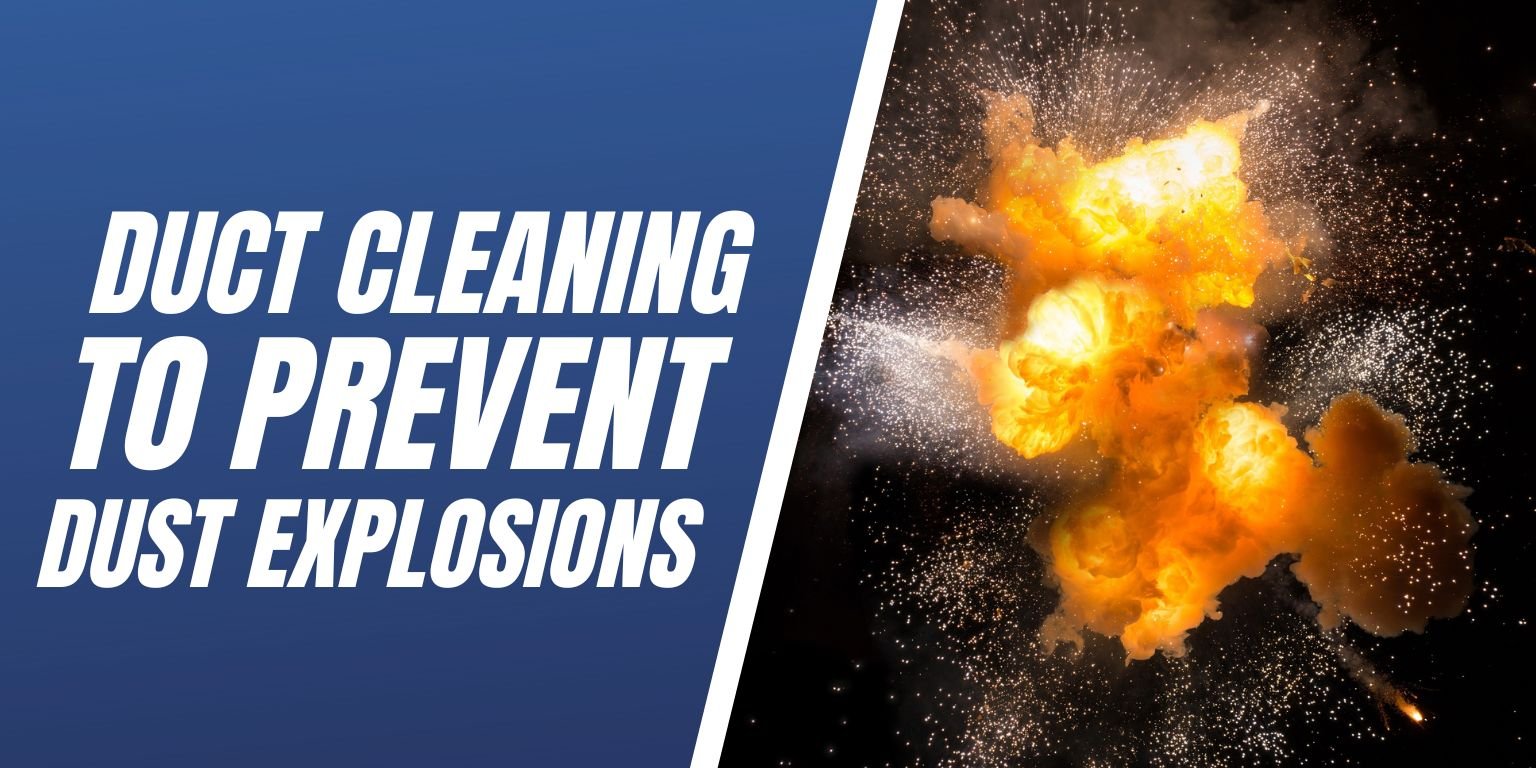
As an environmental cleaning company, we talk a lot about the different ways to help provide a safe and clean work environment for your employees. As an Industrial facility, part of that clean and safe work environment is preventing fires from happening. So, what does environmental cleaning have to do with preventing fires from happening in your facility? The answer, combustible dust remediation.
Combustible dust collected in visible areas or accumulating on high surfaces is a well-known source of industrial fires and explosions. It’s usually when an employee or inspector notices the dust levels on these surfaces is higher than what code allows that we get called to come out and safely clean it for our customers. But what about the less obvious ways, like duct cleaning in your facility?
Combustible Dust Removal Within The Ventilation System
When thinking about fire prevention tactics, duct cleaning to prevent a fire from starting is probably not the first thing you would think about. According to the Dust Explosion Pentagon, one of the essential parts to creating the situation for a combustible dust explosion is containment. And what better environment for this to happen than inside of a facility’s ductwork.
Dust can stay in the air for days, depending on its size, and over time will be brought into the ventilation ductwork as air flows through the building. The dust will begin to settle in sections of the ventilation where there is anything that might begin to snag the dust flowing past. This can lead to significant accumulations of potentially explosive dust, even if the rest of the building appears clean and safe.
How Does A Combustible Dust Explosion Happen?
Accumulated dust can pose as a fire hazard. Dust is flammable and a fire can start from a spark of energy, or an extremely hot surface. The more dust build up there is, the more chances there are for a fire to happen. According to NFPA 654, cleaning is needed immediately “whenever a dust layer of 1/32- inch thickness accumulates over a surface area of at least 5% of the floor area of the facility or any given room.” The same rule applies when it comes to cleaning a facility’s ductwork.
This may seem like it’s not an issue, the ducts are covered and should be safe from ignition sources. But in fact, the flowing air actually causes potential ignition sources to be drawn into the ductwork. Sparks and embers can stay hot for a long time. Once sucked into the HVAC system, they can come into contact with dust, or a piece of metal traveling through the ductwork. This will create an ignition spark. The dust moving through the ventilation also creates a buildup of static electricity, which can have the potential to create an explosion. The pressure builds with the initial explosion, and the confinement forces the flames to travel down the ductwork, consuming the collected dust along the way. It acts much like the barrel of a gun or cannon, and builds up immense pressure until it hits something that blocks it, where it then exerts the pressure to force through the weakest point. This is where the explosion becomes dangerous to employees, because the force of these dust explosions can blow entire roofs off buildings, buckle concrete floors, or throw heavy machinery through a building.
We can’t stress enough the importance of making sure your facility’s ductwork is cleaned and free of any combustible dust accumulations. Not only do dirty ducts create health issues for your employees, but they also create a safety and confined dust explosion risk.
Working With Hughes Environmental
Hughes Environmental has performed combustible dust cleaning in a wide array of facilities and has dealt with many types of combustible dust. Our technicians that are trained, certified and up-to-date on common best practices, and use equipment approved for combustible dust cleaning, such as intrinsically safe vacuums and grounded hoses.
Hughes Environmental has an OSHA trainer on staff, and our technicians have been through OSHA 10- or 30-hour training. We also have Council-certified Indoor Environmentalists (CIE) and Council-certified Microbial Remediators (CMR) on staff.
Contact Us Here or call us at 888-845-3952 to learn how we can help you avoid fire & explosion hazards in the workplace.

